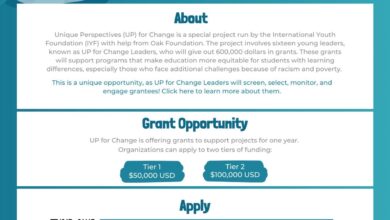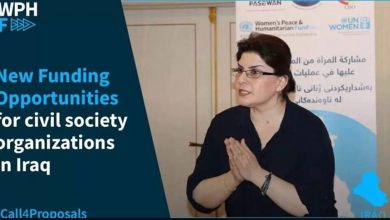Apply Now: Applications Invited for USAID Integrated Health Systems Strengthening (IHSS)2024 ($325,000,000 grants)

Organization: U.S. Agency for International Development
Apply By: 06 Jul 2024
Grant Amount: 325,000,000 USD
About the Organization
USAID leads international development and humanitarian efforts to save lives, reduce poverty, strengthen democratic governance and help people progress beyond assistance.
President John. F. Kennedy created the United States Agency for International Development by executive order in 1961 to lead the US government’s international development and humanitarian efforts.
About the Grant
The purpose of the Integrated Health System Strengthening (IHSS) program is to accelerate countries’ Health System Strengthening (HSS) efforts and achieve sustainable, equitable, and resilient health systems through locally-led, evidence-driven, and context-specific approaches to HSS. The primary goals are to advance primary health care (PHC), accelerate progress toward universal health coverage (UHC), and improve health outcomes. Investments in HSS help USAID reach its priority global health goals of preventing child and maternal deaths, controlling the HIV/AIDS epidemic, and combating infectious disease, which directly contributes to strengthening global health security. A strengthened and accessible health system is necessary to yield high-quality health services, which are essential for achieving sustainable improvements in health, promoting economic growth, and overall democratic development.
The United States Agency for International Development’s (USAID) investments in HSS consist of the strategies, responses, and activities that are designed to sustainably improve country health system performance. A health system is composed of all people, institutions, resources, and activities whose primary purpose is to promote, restore, and maintain health. A strong health system underpins all health investments, increases resiliency, and advances health and well being for all.
The COVID-19 pandemic created an increase in deaths that has resulted in the first global reduction in life expectancy in a century and brought renewed global attention to the long-term health and development importance of resilient health systems. Sustaining and advancing health outcome achievements in USAID’s priority areas requires supporting health system resilience and sustainability through robust and intentional investments in cross-cutting, integrated HSS programming. This includes, but is not limited to, investments in primary health care which serve as the foundation for achieving access to universal health coverage. The World Health Organization (WHO) has estimated that scaling up PHC interventions across low and middle income countries (LMICs) could save 60 million lives and increase average life expectancy by 3.7 years by 2030.1 USAID is coordinating investments into PHC as a way of combating the recent global reductions in life expectancy and to foster resilience and preparedness against future threats. HSS investments provide the foundation for sustaining progress in PHC and towards achieving broader global goals, including all of the targets for Sustainable Development Goal (SDG) 3, to ensure healthy lives and promote well-being for all at all ages.2 HSS investments are central to achieving SDG target 3.8 (“Achieve universal health coverage, including financial risk protection, access to quality essential health-care services and access to safe, effective, quality and affordable essential medicines and vaccines for all”), but are similarly foundational to achieving the other SDG 3 goals.
USAID recognizes that further progress in reaching health outcomes requires well-coordinated HSS programming. This program has a particular focus on integrated HSS activities, which utilize a systems lens to work across health areas to address common system challenges and strengthen system-wide performance to promote sustainable improvements in health outcomes. This includes activities to promote financial protection, efficiency, and affordability of health services in general; ensure the quality or availability of an essential package of prevention, promotion, treatment, and care services; enhance equitable access to priority services by under-served, marginalized and other high priority groups; and ensure responsiveness to community expectations. In order to reach USAID’s HSS goals, programming should advance USAID’s three health systems outcomes of focus – health equity, quality, and resource optimization.
Programmatic approaches to strengthening these outcomes should intentionally strengthen multiple aspects of the health system where appropriate. The six “building blocks” of HSS (service delivery, health workforce, health information systems, access to essential medicines, financing, and leadership and governance) remain critical investment areas, but were not meant to be individualized into “siloed” areas of work or support. As WHO notes, “A health system, like any other system, is a set of interconnected parts that must function together to be effective. Changes in one area have repercussions elsewhere. Improvements in one area cannot be achieved without contributions from the others. Interaction between building blocks is essential for achieving better health outcomes.”4 Recent global consensus, via the 2018 Astana Declaration on Primary Health Care,5 the 2019 Declaration of the UN High-Level Meeting on UHC,6 and the 2023 Declaration of the UN High-Level Meeting on UHC,7 all reflect the need for a more integrated and outcomes-based approach to health systems. At the global level, strengthened collaboration and coordination across HSS global actors continues to be needed to advance effective, efficient, sustainable HSS practice. The activity is thus intended to provide technical assistance and global leadership to comprehensively and efficiently address multiple system components and help advance country PHC, UHC, and preparedness and resilience priorities.
Focus Areas
Focus Area #1 – Address the root causes of complex health system challenges through systems thinking
Integrated HSS activities generally address and impact, or at minimum consider the relevance of, multiple system functions simultaneously, incorporating systems thinking approaches.8 For example, improving health outcomes requires strong institutional arrangements across all levels of the health system, including well-functioning community health systems. Approaches within this activity might therefore address leadership and governance capacity, behaviors, and work to incorporate evidence-based policy processes, mitigate corruption risks, and strengthen accountability at both national and sub-national levels. Simultaneously the activity might support the seamless integration of community health systems into the overall health system architecture with enhanced governance structures, well-established community engagement platforms, strengthened donor coordination platforms, and promotion of country-led efforts to integrate community health workers (CHW) into human resource and health sector plans.
Focus Area #2 – Strengthen the entirety of the health system, including public and private sectors and across all levels, to meet the population needs of each context, with a focus on Primary Health Care.
This activity can include work from primary to tertiary levels but needs to include a focus on the system strengthening necessary to advance PHC. PHC is widely regarded as the most inclusive, equitable and cost-effective way to achieve universal health coverage (UHC) and creates more responsive health systems at lower or equivalent costs, with higher standards of quality, greater efficiencies, and with broader community acceptance. It is estimated that ninety percent of essential interventions necessary for UHC can be delivered using a PHC approach.10 Foundational health systems investments (in areas such as financing, the health workforce, governance, digital transformation, and more) support and sustain the delivery of equitable, efficient, and high quality primary health services.
Focus Area #3 – Promote localization by putting local actors in the lead, strengthening local systems, and being responsive to local communities.
Aligning with USAID’s definition of localization,12 this activity should seek to put local actors in the lead, strengthen local systems, and be responsive to local communities. Implementation throughout the life of the activity will require a locally-led, whole-of-society approach, with close collaboration with key HSS stakeholders at the global, national, regional, and local levels, including but not limited to country policymakers, the private sector, health service providers, continental and regional partner organizations, other donor representatives, community leaders, faith based organizations, academic institutions, and other actors throughout the health system.
FOCUS AREAS AND RESULTS Focus Area #4 – Increase social inclusion and gender transformation throughout implementation to advance inclusive, equitable, and accessible healthcare systems
Operationally the activity should center relevant aspects of identity in each context, including gender, disability, etc. and should aim to increase social inclusion and health equity throughout implementation by promoting gender and social equity, advancing gender-transformative HSS approaches, considering intersectionality, and incorporating social determinants of health where appropriate. The activity should be intentional about integrating principles that promote improved health care access and quality for all populations, including marginalized and under served communities, and should seek ways to ensure health systems are designed for and by people.
Focus Area #5 – Enhance health system resilience and responsiveness capacity to prepare for, mitigate, and adapt to emerging challenges, including infectious disease outbreaks, climate change, and other shocks.
HSS investments are crucial for strengthening health system resilience, defined as the ability to adapt, respond, and recover from shocks and stressors.13 This award is intended to support health systems to prepare for, mitigate and/or adapt to all emerging and potential challenges by strengthening their capacity to consistently provide acceptable, accessible, and quality care to the communities they serve, including during times of shocks.
Focus Area #6 – Strengthen monitoring, evaluation, research, and learning (MERL) efforts to understand health system changes and the contributions of HSS activities and facilitate real time learning and adaptation.
Programmatic approaches undertaken within this activity should reflect USAID’s cross-cutting HSS priority related to strengthened monitoring, evaluation, research, and learning (MERL). HSS MERL is essential to understanding how health systems and relevant multi-sectoral components interact and impact one another to produce health outcomes, health system changes, and how these changes can be sustained. MERL allows health system practitioners to understand the contribution or impact of HSS efforts.
Focus Area #7 – Advance health sector integration and collaboration by coordinating efforts across relevant investment areas and fostering multi-sectoral partnerships.
Finally, this activity will advance health sector integration and collaboration by providing opportunities for jointly-funded or collaborative work across health areas and with multi-sectoral partners. Implementation of effective HSS activities requires coordination and integration of efforts across relevant investment areas. Improving global, regional, national, sub-national, and multisectoral coordination and collaboration can enable timely responses to emerging health system challenges and improve the effectiveness of long-term programs.
Funding Information
USAID intends to award one (1) Cooperative Agreement pursuant to this notice of funding opportunity. Subject to funding availability and at the discretion of the Agency, USAID intends to provide up to $325,000,000.00 in USAID funding over a five (5) year period.
Eligibility
USAID welcomes applications from organizations that have not previously received financial assistance from USAID.
USAID welcomes applications from local organizations and/or consortiums that include local organizations. USAID defines a “local entity” as an individual, a corporation, a nonprofit organization, or another body of persons that:
Is legally organized under the laws of; and
Has as its principal place of business or operations in; and
Is
majority owned by individuals who are citizens or lawful permanent residents of; and
managed by a governing body the majority of who are citizens or lawful permanent residents of the country receiving assistance.
Faith-based organizations are eligible to apply for federal financial assistance on the same basis as any other organization and are subject to the protections and requirements of Federal law.
How to Apply
Current Closing Date for Applications: Jul 06, 2024


